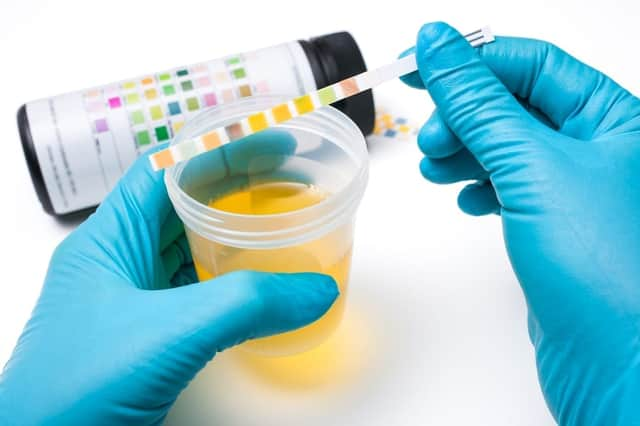Simple urine test could measure how long we have left to live


A simple urine test could measure how much our body has aged and even how long left we have to live.
Researchers have discovered that a substance indicating oxidative damage increases in urine as people get older.
Advertisement
Hide AdAdvertisement
Hide AdThe study, published in the journal Frontiers in Ageing Neuroscience, also describes a way to easily measure levels of the marker in human urine samples.
Researchers say the new marker potentially provides a method to measure how much our body has aged - our biological rather than chronological age.
And they believe it could help predict our risk of developing age-related disease and even our risk of death.
While everyone born in the same year has the same chronological age, the bodies of different people age at different rates.
Advertisement
Hide AdAdvertisement
Hide AdResearchers said it means that, although the risk of many diseases increases with age, the link between our age in years and our health and lifespan is relatively loose.
Many people enjoy long lives, relatively free of disease, while others suffer chronic illness and premature death.
Some researchers consider normal ageing to be a disease, where our cells accumulate damage over time.
Variable rates
The rate of cellular damage can vary from person to person and may be dictated by genetics, lifestyle and the environment we live in.
Advertisement
Hide AdAdvertisement
Hide AdThe researchers said that cellular damage may be a more accurate indication of our biological age than the number of years since we were born.
And finding a way to measure biological age could help to predict the risk of developing age-related disease and even death.
One mechanism thought to underlie biological aging involves a molecule vital to human survival - oxygen - in what is called the free radical theory of ageing.
Dr Jian-Ping Cai, of the National Centre of Gerontology in China, said: "Oxygen by-products produced during normal metabolism can cause oxidative damage to biomolecules in cells, such as DNA and RNA.
Advertisement
Hide AdAdvertisement
Hide Ad"As we age, we suffer increasing oxidative damage, and so the levels of oxidative markers increase in our body."
One such marker, called 8-oxo-7,8-dihydroguanosine - or 8-oxoGsn for short, results from oxidation of a crucial molecule in our cells called RNA.
Markers down